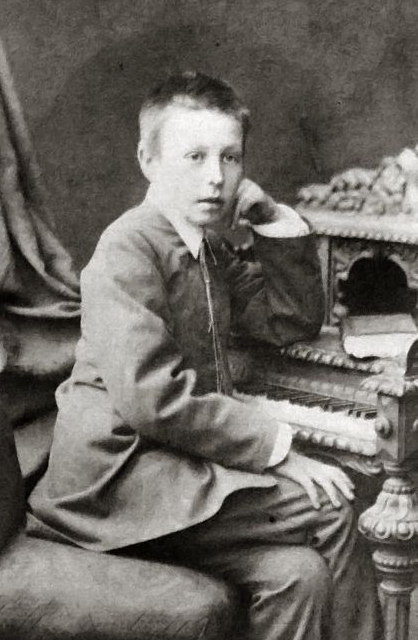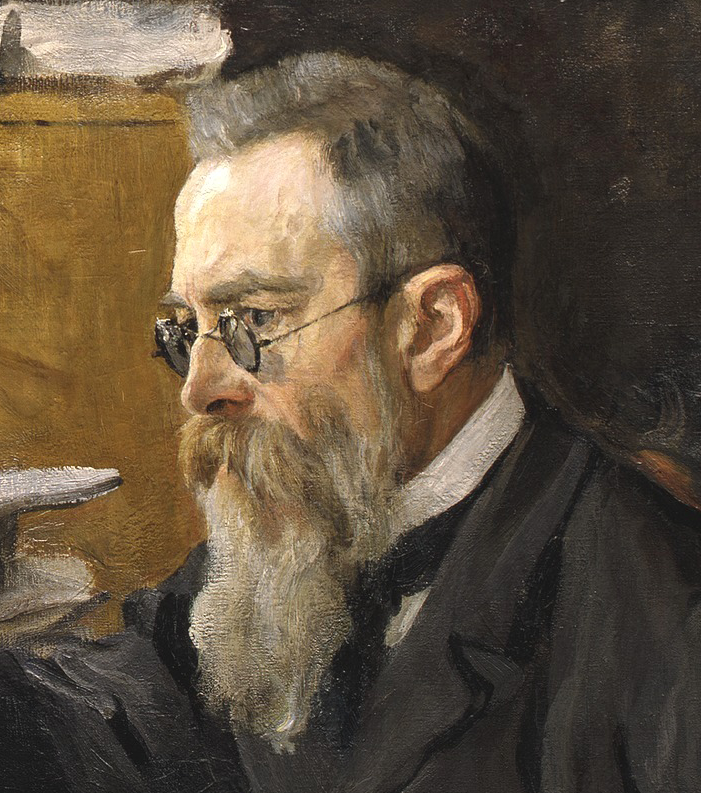|
Asia Minor (song)
"Asia Minor" is a 1961 instrumental recording by Jimmy Wisner (operating under the name Kokomo so as to not alienate his jazz fans). It is a rock and roll adaptation of Edvard Grieg's " Piano Concerto in A Minor", using shellac on the hammers of a cheap piano so as to induce a honky-tonk sound. Review of ''Asia Minor'' AllMusic He was turned down by 10 labels and had to release the track on his own label Future Records. The song became a hit, reaching No. 8 on the ''Billboard'' Hot 100 ''Billboard'' AllMusic and No. 35 on the UK Singles Chart, despite having been banned by the BBC, which at the time refused airplay for music found to violate various standards, including pieces deemed to " istortmelody, harmony and rhythm". Background Wisner had previously had two albums out as part of the Jimmy Wisner Trio, but had the idea for adapting a famous classical piece into a boogie-woogie-style piano track. Even though Wisner had many connections in the music industry, no ... [...More Info...] [...Related Items...] OR: [Wikipedia] [Google] [Baidu] |
Jimmy Wisner
James Joseph Wisner (December 8, 1931 – March 13, 2018) was an American pianist, arranger, songwriter, and producer. He is best known for his 1961 hit single " Asia Minor", released under the name Kokomo. Biography Born in Philadelphia, Wisner received classical training as a youngster, and attended Temple University as a psychology student in the late 1950s. He formed the Jimmy Wisner Trio in 1959 with Chick Kinney on drums and Ace Tesone on bass. This ensemble backed musicians who toured through Philadelphia, including Mel Tormé, Carmen McRae, Dakota Staton, and the Hi-Lo's.Jimmy Wisner at Rockabilly.nl He released several full-length albums as a jazz musician, but in 1961 recorded a |
Boogie-woogie
Boogie-woogie is a genre of blues music that became popular during the late 1920s, developed in African-American communities since 1870s.Paul, Elliot, ''That Crazy American Music'' (1957), Chapter 10, p. 229. It was eventually extended from piano, to piano duo and trio, guitar, big band, country and western music, and gospel. While standard blues traditionally expresses a variety of emotions, boogie-woogie is mainly associated with dancing (although not the competitive dance known as boogie-woogie, a term of convenience in that sport). The genre had a significant influence on rhythm and blues and rock and roll. Musical features Boogie-woogie is characterized by a regular left-hand bass figure, which is transposed following the chord changes. : : Boogie-woogie is not strictly a solo piano style; it can accompany singers and be featured in orchestras and small combos. It is sometimes called ''"eight to the bar"'', as much of it is written in common time () time using eighth notes ... [...More Info...] [...Related Items...] OR: [Wikipedia] [Google] [Baidu] |
Philles Records
Philles Records was an American record label formed in 1961 by Phil Spector and Lester Sill, the label taking its name from a hybrid of their first names. Initially, the label was distributed by Jamie/Guyden in Philadelphia. In 1962, Spector purchased Sill's stock to become sole owner at 21 years of age, America's youngest label chief at the time. Founding and background The label issued 12 albums over the course of its existence, but with the exception of ''A Christmas Gift for You'', the focus was always on the single. However, Philles X-125 is a reissue of Philles 119, and X-125 exists with two different B-side tracks, as "Winter Wonderland" (1964) and "Winter Blues" (1965) were substituted for the original flipside, "Harry and Milt Meet Hal B" (1963). "Harry and Milt" and many other flipsides were deliberately undistinguished instrumentals, which were intended to focus attention on the A-sides. These B-sides were originally credited to the A-side artists, but later pieces wer ... [...More Info...] [...Related Items...] OR: [Wikipedia] [Google] [Baidu] |
Phil Spector
Harvey Phillip Spector (born Harvey Philip Spector; December 26, 1939January 16, 2021) was an American record producer and songwriter, best known for his innovative recording practices and entrepreneurship in the 1960s, followed decades later by his two trials and conviction for murder in the 2000s. Spector developed the Wall of Sound, a production style that is characterized for its diffusion of tone colors and dense orchestral sound, which he described as a "Wagnerian" approach to rock and roll. He is widely regarded as one of the most influential figures in pop music history and one of the most successful producers of the 1960s. Born in the Bronx, Spector moved to Los Angeles as a teenager and began his career in 1958 as a founding member of the Teddy Bears, for whom he penned "To Know Him Is to Love Him", a U.S. number-one hit. In 1960, after working as an apprentice to Leiber and Stoller, Spector co-founded Philles Records, and at the age of 21 became the youngest ever U.S ... [...More Info...] [...Related Items...] OR: [Wikipedia] [Google] [Baidu] |
Ernesto Lecuona
Ernesto Lecuona y Casado (; August 7, 1896 – November 29, 1963) was a Cuban composer and pianist, many of whose works have become standards of the Latin, jazz and classical repertoires. His over 600 compositions include songs and zarzuelas as well as pieces for piano and symphonic orchestra. In the 1930s, he helped establish a popular band, the Lecuona Cuban Boys, which showcased some of his most successful pieces and was later taken over by Armando Oréfiche. In the 1950s, Lecuona recorded several LPs, including solo piano albums for RCA Victor. He moved to the United States after the Cuban Revolution and died in Spain in 1963. Early years Lecuona was born in Guanabacoa, Havana, Cuba, Kingdom of Spain, to a Cuban mother and a Canarian father. There are inconsistencies surrounding his birthdate, with some sources indicating the year 1895, and others still giving the day as August 6. He started studying piano at the age of five, under the tuition of his sister Ernestina Lecu ... [...More Info...] [...Related Items...] OR: [Wikipedia] [Google] [Baidu] |
Malagueña (song)
"Malagueña" (, from Málaga) is a song by Cuban composer Ernesto Lecuona. It was originally the sixth movement of Lecuona's ''Suite Andalucía'' (1933), to which he added lyrics in Spanish. The song has since become a popular, jazz, marching band, and drum and bugle corps standard and has been provided with lyrics in several languages. In general terms Malagueñas are flamenco dance styles from Málaga in the southeast of Spain (see Malagueñas (flamenco style)). Origins The melody that forms the basis of "Malagueña" was not of Lecuona's invention. It can be heard in 19th century American composer Louis Moreau Gottschalk's solo piano composition "Souvenirs d'Andalousie." Based on Gottschalk's international renown, it is reasonable to assume Lecuona heard it and either wittingly or unwittingly co-opted it in composing his most famous piece. Further research is required to determine if Gottschalk's composition and the melody popularized as "Malagueña" is itself based ... [...More Info...] [...Related Items...] OR: [Wikipedia] [Google] [Baidu] |
Prelude In C-sharp Minor (Rachmaninoff)
Sergei Rachmaninoff's Prelude in C-sharp minor (russian: Прелюдия, translit=Prelyudiya, links=no), Op. 3, No. 2, is one of the composer's most famous compositions. Part of a set of five piano pieces titled '' Morceaux de fantaisie,'' it is a 62-bar prelude in ternary (ABA) form. It is also known as ''The Bells of Moscow'' since the introduction seems to reproduce the Kremlin's most solemn carillon chimes. Its first performance was by the composer on 26 September 1892, at a festival called the Moscow Electrical Exhibition. After this première, a review of the concert singled out the Prelude, noting that it had “aroused enthusiasm”. From this point on, its popularity grew. Rachmaninoff later published 23 more preludes to complete a set of 24 preludes covering all the major and minor keys, to emulate earlier sets by Chopin, Alkan, Scriabin and others. Background This work was one of the first the 19‑year‑old Rachmaninoff composed as a "Free Artist", after he ... [...More Info...] [...Related Items...] OR: [Wikipedia] [Google] [Baidu] |
Sergei Rachmaninoff
Sergei Vasilyevich Rachmaninoff; in Russian pre-revolutionary script. (28 March 1943) was a Russian composer, virtuoso pianist, and conductor. Rachmaninoff is widely considered one of the finest pianists of his day and, as a composer, one of the last great representatives of Romanticism in Russian classical music. Early influences of Tchaikovsky, Rimsky-Korsakov, and other Russian composers gave way to a thoroughly personal idiom notable for its song-like melodicism, expressiveness and rich orchestral colours. The piano is featured prominently in Rachmaninoff's compositional output and he made a point of using his skills as a performer to fully explore the expressive and technical possibilities of the instrument. Born into a musical family, Rachmaninoff took up the piano at the age of four. He studied with Anton Arensky and Sergei Taneyev at the Moscow Conservatory and graduated in 1892, having already composed several piano and orchestral pieces. In 1897, following the d ... [...More Info...] [...Related Items...] OR: [Wikipedia] [Google] [Baidu] |
Like, Long Hair
"Like, Long Hair" is a 1961 top-40 hit song by American rock band Paul Revere & the Raiders. An instrumental composed by the group and arranged by Gary Paxton Gary Sanford Paxton (born Larry Wayne Stevens; May 18, 1939 – July 17, 2016) was an American record producer, recording artist, and Grammy and Dove Award winning songwriter. Paxton was a member of Skip & Flip and the Hollywood Argyles and was ..., it spent six weeks on the ''Billboard'' Hot 100, peaking at No. 38. ''Billboard.com''. Retrieved February 10, 2018. References 19 ...[...More Info...] [...Related Items...] OR: [Wikipedia] [Google] [Baidu] |
Paul Revere & The Raiders
Paul Revere & the Raiders (also known as Raiders) were an American rock band formed in Boise, Idaho, in 1958. They saw considerable U.S. mainstream success in the second half of the 1960s and early 1970s. The band was known for including Revolutionary War-style clothes in their attire. Originally an instrumental rock combo called the Downbeats, the Raiders were formed in 1958 by organist Paul Revere, and included singer Mark Lindsay. After charting in 1961 with the minor hit "Like, Long Hair" and then in late 1963 just missing ''Billboard''s Hot 100 with a cover of "Louie Louie", the band was signed to Columbia Records, under the tutelage of producer Terry Melcher. In January 1966 the single " Just Like Me"—propelled by exposure on Dick Clark's shows such as ''Where The Action Is''—reached no. 11 on the Hot 100, followed by the consecutive Top Tens "Kicks" and " Hungry", thus establishing the band as national stars. Clark's TV shows showcased Lindsay as a teen idol and Rev ... [...More Info...] [...Related Items...] OR: [Wikipedia] [Google] [Baidu] |
Nikolai Rimsky-Korsakov
Nikolai Andreyevich Rimsky-Korsakov . At the time, his name was spelled Николай Андреевичъ Римскій-Корсаковъ. la, Nicolaus Andreae filius Rimskij-Korsakov. The composer romanized his name as ''Nicolas Rimsky-Korsakow''.The BGN/PCGN transliteration of Russian is used for his name here. ALA-LC system: Nikolaĭ Andrevich Rimskiĭ-Korsakov, ISO 9 system: Nikolaj Andreevič Rimskij-Korsakov. (18 March 1844 – 21 June 1908) was a Russian composer, a member of the group of composers known as The Five. He was a master of orchestration. His best-known orchestral compositions—'' Capriccio Espagnol'', the ''Russian Easter Festival Overture'', and the symphonic suite ''Scheherazade''—are staples of the classical music repertoire, along with suites and excerpts from some of his 15 operas. ''Scheherazade'' is an example of his frequent use of fairy-tale and folk subjects. Rimsky-Korsakov believed in developing a nationalistic style of classical ... [...More Info...] [...Related Items...] OR: [Wikipedia] [Google] [Baidu] |




